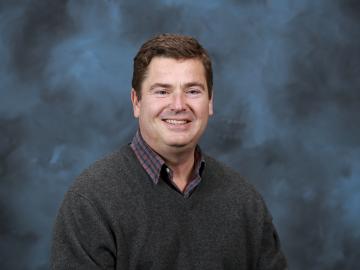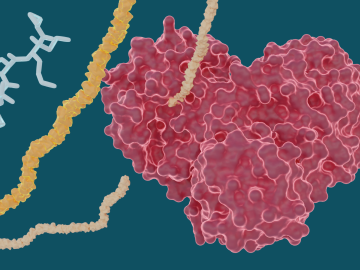
Filter News
Area of Research
- Advanced Manufacturing (3)
- Biological Systems (1)
- Biology and Environment (66)
- Computational Biology (1)
- Computational Engineering (1)
- Computer Science (1)
- Energy Science (59)
- Fuel Cycle Science and Technology (1)
- Fusion and Fission (9)
- Fusion Energy (1)
- Isotope Development and Production (1)
- Isotopes (24)
- Materials (57)
- Materials for Computing (9)
- National Security (47)
- Neutron Science (98)
- Nuclear Science and Technology (14)
- Quantum information Science (2)
- Supercomputing (82)
News Type
News Topics
- (-) Advanced Reactors (24)
- (-) Bioenergy (93)
- (-) Clean Water (18)
- (-) Composites (23)
- (-) Cybersecurity (31)
- (-) Exascale Computing (64)
- (-) Isotopes (53)
- (-) National Security (78)
- (-) Neutron Science (136)
- (-) Space Exploration (16)
- (-) Summit (62)
- 3-D Printing/Advanced Manufacturing (105)
- Artificial Intelligence (112)
- Big Data (53)
- Biology (106)
- Biomedical (59)
- Biotechnology (35)
- Buildings (45)
- Chemical Sciences (70)
- Computer Science (174)
- Coronavirus (36)
- Critical Materials (16)
- Education (5)
- Element Discovery (1)
- Emergency (3)
- Energy Storage (75)
- Environment (154)
- Fossil Energy (7)
- Frontier (60)
- Fusion (55)
- Grid (48)
- High-Performance Computing (113)
- Hydropower (6)
- ITER (6)
- Machine Learning (50)
- Materials (111)
- Materials Science (111)
- Mathematics (8)
- Mercury (9)
- Microelectronics (4)
- Microscopy (40)
- Molten Salt (5)
- Nanotechnology (46)
- Nuclear Energy (94)
- Partnerships (67)
- Physics (60)
- Polymers (22)
- Quantum Computing (48)
- Quantum Science (79)
- Security (28)
- Simulation (52)
- Software (1)
- Statistics (3)
- Transportation (56)
Media Contacts

David Kropaczek, director of the Consortium for Advanced Simulation of Light Water Reactors, or CASL, at the Department of Energy’s Oak Ridge National Laboratory, has been named a fellow of the American Nuclear Society.

A multi-institutional team, led by a group of investigators at Oak Ridge National Laboratory, has been studying various SARS-CoV-2 protein targets, including the virus’s main protease. The feat has earned the team a finalist nomination for the Association of Computing Machinery, or ACM, Gordon Bell Special Prize for High Performance Computing-Based COVID-19 Research.

Experiments led by researchers at ORNL have determined that several hepatitis C drugs can inhibit the SARS-CoV-2 main protease, a crucial protein enzyme that enables the novel coronavirus to reproduce.

ORNL has added 10 virtual tours to its campus map, each with multiple views to show floor plans, rotating dollhouse views and 360-degree navigation. As a user travels through a map, pop-out informational windows deliver facts, videos, graphics and links to other related content.

There are more than 17 million veterans in the United States, and approximately half rely on the Department of Veterans Affairs for their healthcare.

To better understand how the novel coronavirus behaves and how it can be stopped, scientists have completed a three-dimensional map that reveals the location of every atom in an enzyme molecule critical to SARS-CoV-2 reproduction.

New capabilities and equipment recently installed at the Department of Energy’s Oak Ridge National Laboratory are bringing a creek right into the lab to advance understanding of mercury pollution and accelerate solutions.

The Transformational Challenge Reactor, or TCR, a microreactor built using 3D printing and other new advanced technologies, could be operational by 2024.

Popular wisdom holds tall, fast-growing trees are best for biomass, but new research by two U.S. Department of Energy national laboratories reveals that is only part of the equation.

Two scientists with the Department of Energy’s Oak Ridge National Laboratory have been elected fellows of the American Physical Society.


